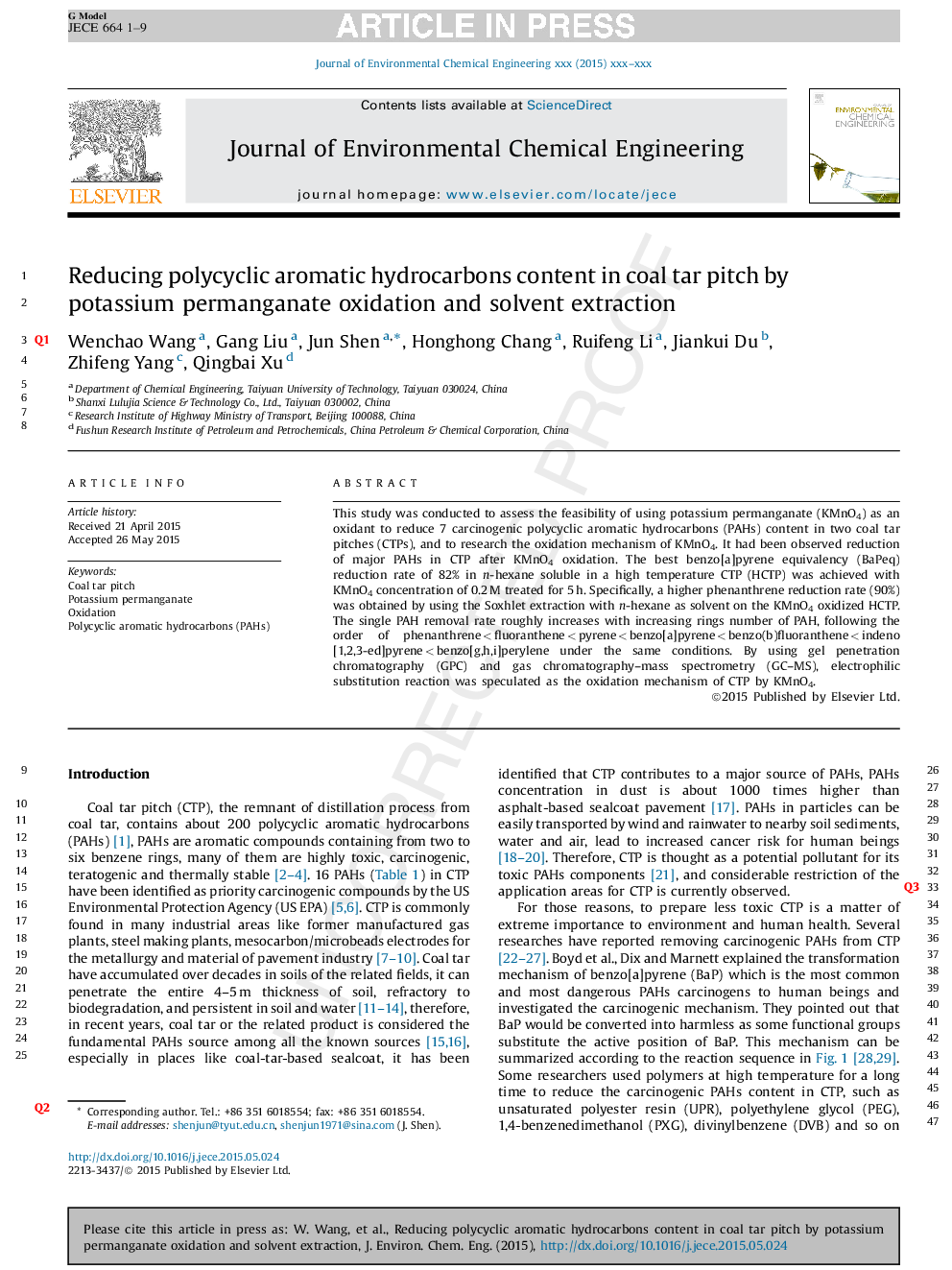| Article ID | Journal | Published Year | Pages | File Type |
|---|---|---|---|---|
| 10277151 | Journal of Environmental Chemical Engineering | 2015 | 9 Pages |
Abstract
This study was conducted to assess the feasibility of using potassium permanganate (KMnO4) as an oxidant to reduce 7 carcinogenic polycyclic aromatic hydrocarbons (PAHs) content in two coal tar pitches (CTPs), and to research the oxidation mechanism of KMnO4. It had been observed reduction of major PAHs in CTP after KMnO4 oxidation. The best benzo[a]pyrene equivalency (BaPeq) reduction rate of 82% in n-hexane soluble in a high temperature CTP (HCTP) was achieved with KMnO4 concentration of 0.2 M treated for 5 h. Specifically, a higher phenanthrene reduction rate (90%) was obtained by using the Soxhlet extraction with n-hexane as solvent on the KMnO4 oxidized HCTP. The single PAH removal rate roughly increases with increasing rings number of PAH, following the order of phenanthrene < fluoranthene < pyrene < benzo[a]pyrene < benzo(b)fluoranthene < indeno[1,2,3-ed]pyrene < benzo[g,h,i]perylene under the same conditions. By using gel penetration chromatography (GPC) and gas chromatography-mass spectrometry (GC-MS), electrophilic substitution reaction was speculated as the oxidation mechanism of CTP by KMnO4.
Related Topics
Physical Sciences and Engineering
Chemical Engineering
Chemical Engineering (General)
Authors
Wenchao Wang, Gang Liu, Jun Shen, Honghong Chang, Ruifeng Li, Jiankui Du, Zhifeng Yang, Qingbai Xu,
